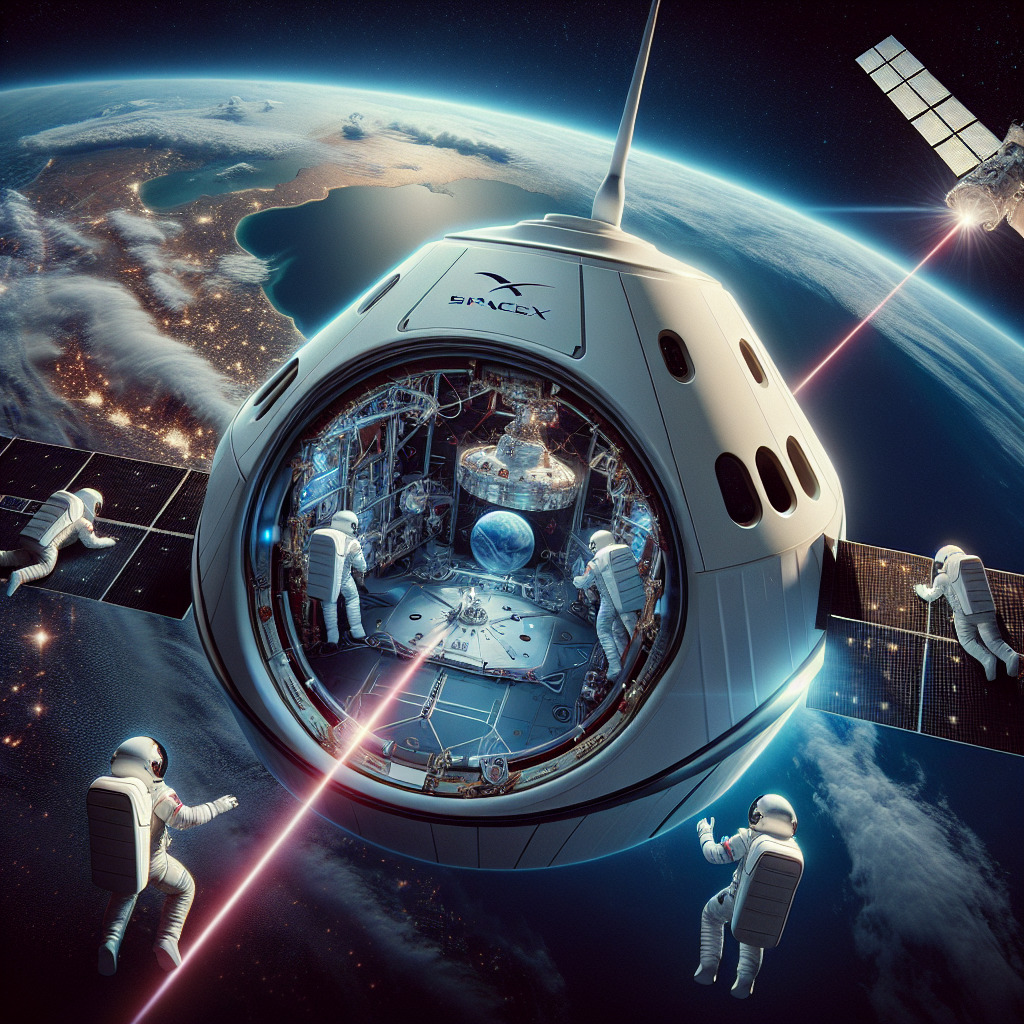Key Takeaways
Introduction to the Polaris Dawn Mission
The Polaris Dawn mission, launched early Tuesday at 5:23 a.m. ET from Cape Canaveral, Florida, signifies a monumental achievement in commercial space exploration. With a crew of four civilians aboard the SpaceX Dragon spacecraft, this mission is set to push the boundaries of what civilians can achieve in space. Over a five-day journey in orbit, the mission aims to reach several historic milestones, including the first civilian spacewalk and a groundbreaking test of SpaceX’s Starlink laser communication system.
Historic First Civilian Spacewalk
One of the key objectives of the Polaris Dawn mission is to carry out the first-ever spacewalk conducted by an all-civilian crew. This is a significant step forward in making space more accessible to everyday people, breaking the monopoly of government astronauts on such extra-vehicular activities (EVAs). The crew will be equipped with newly developed SpaceX EVA spacesuits designed to provide maximum safety and maneuverability. This spacewalk will not only demonstrate the capabilities of civilian astronauts but will also serve to collect vital data that can inform future missions.
Importance of Civilian Spacewalks
The success of a civilian spacewalk is crucial for future missions. It will validate the effectiveness and safety of SpaceX’s EVA suits and procedures, paving the way for more inclusive space missions. This could lead to more diverse and comprehensive research opportunities and allows a broader population to experience space—vital for future long-term missions to destinations like Mars.
Testing Starlink Laser Communications
The highlight of the Polaris Dawn mission is the testing of SpaceX’s new Starlink laser-based communication system, dubbed “Plug and Plaser.” This system aims to enhance communication capabilities between the Dragon spacecraft and Starlink satellites, contributing to SpaceX’s long-term vision of reliable, high-speed internet in space.
“Plug and Plaser” Technology
The “Plug and Plaser” system leverages cutting-edge laser technology to facilitate high-speed, low-latency communication. Installed in Dragon’s trunk, the system will link up with Starlink satellites, supported by an onboard Starlink router in Dragon’s cabin. The real-time testing of this system is expected to demonstrate its potential for use in future deep space missions, including those to the Moon and Mars.
Potential Impact on Future Missions
The implications of successfully testing Starlink’s laser communication system are profound. Enhanced communication capabilities are crucial for the success of longer and more complex missions. Real-time data transmission can make monitoring spacecraft health, conducting scientific experiments, and ensuring astronaut safety more efficient. This technology could also significantly reduce communication delays, which are a significant challenge in deep space missions.
Extended Orbit: Reaching Record Heights
Another remarkable goal of the Polaris Dawn mission is to achieve the highest Earth orbit ever attained by a Dragon mission. This is no small feat, as it surpasses all previous Dragon missions and represents the furthest any spacecraft has traveled in Earth’s orbit since NASA’s Apollo program more than five decades ago.
Why Extended Orbit Matters
Reaching an extended orbit allows for a variety of research opportunities. It exposes the spacecraft and crew to a higher radiation environment, providing valuable data on radiation protection and the performance of spacecraft systems in more extreme conditions. This data is especially relevant for planning long-duration missions to Mars, where radiation poses a significant risk to both spacecraft and human health.
Implications for Future Exploration
The success of this high orbit mission validates the capabilities of the Dragon spacecraft to operate in more challenging environments. This achievement can help SpaceX and other companies plan for future missions that push the envelope of what is currently considered possible, fostering innovation and new possibilities in space exploration.
Broader Ambitions and Future Implications
Jessica Jensen, Vice President of Customer Integration and Operations at SpaceX, highlighted the mission’s role in advancing SpaceX’s ultimate goal: expanding humanity’s access to space. The Polaris Dawn mission is an integral step toward establishing future bases on the Moon and Mars. It combines technological innovation with human adaptability, setting the stage for more ambitious projects in the near future.
Commercialization of Space Technology
The development and testing of the “Plug and Plaser” system exemplify SpaceX’s vision of not just reaching space but also commercializing it. By potentially offering laser communication capabilities to other satellite systems and future interplanetary missions, SpaceX can create new revenue streams and foster broader collaboration within the space industry.
Pioneering Future Lunar and Martian Missions
The data collected and the technologies validated during the Polaris Dawn mission will be crucial for the planning and execution of future lunar and Martian bases. Effective communication systems, reliable EVA suits, and the capability to reach higher orbits are all essential components that will contribute to the success of these pioneering missions.
Conclusion
The Polaris Dawn mission represents a significant milestone in commercial space exploration. From the first civilian spacewalk to the testing of the groundbreaking Starlink “Plug and Plaser” laser communication system, this mission is set to achieve remarkable feats. By pushing the boundaries of current technology and human potential, Polaris Dawn is setting the stage for an exciting future in space exploration, bringing humanity closer to becoming a multi-planetary species.




